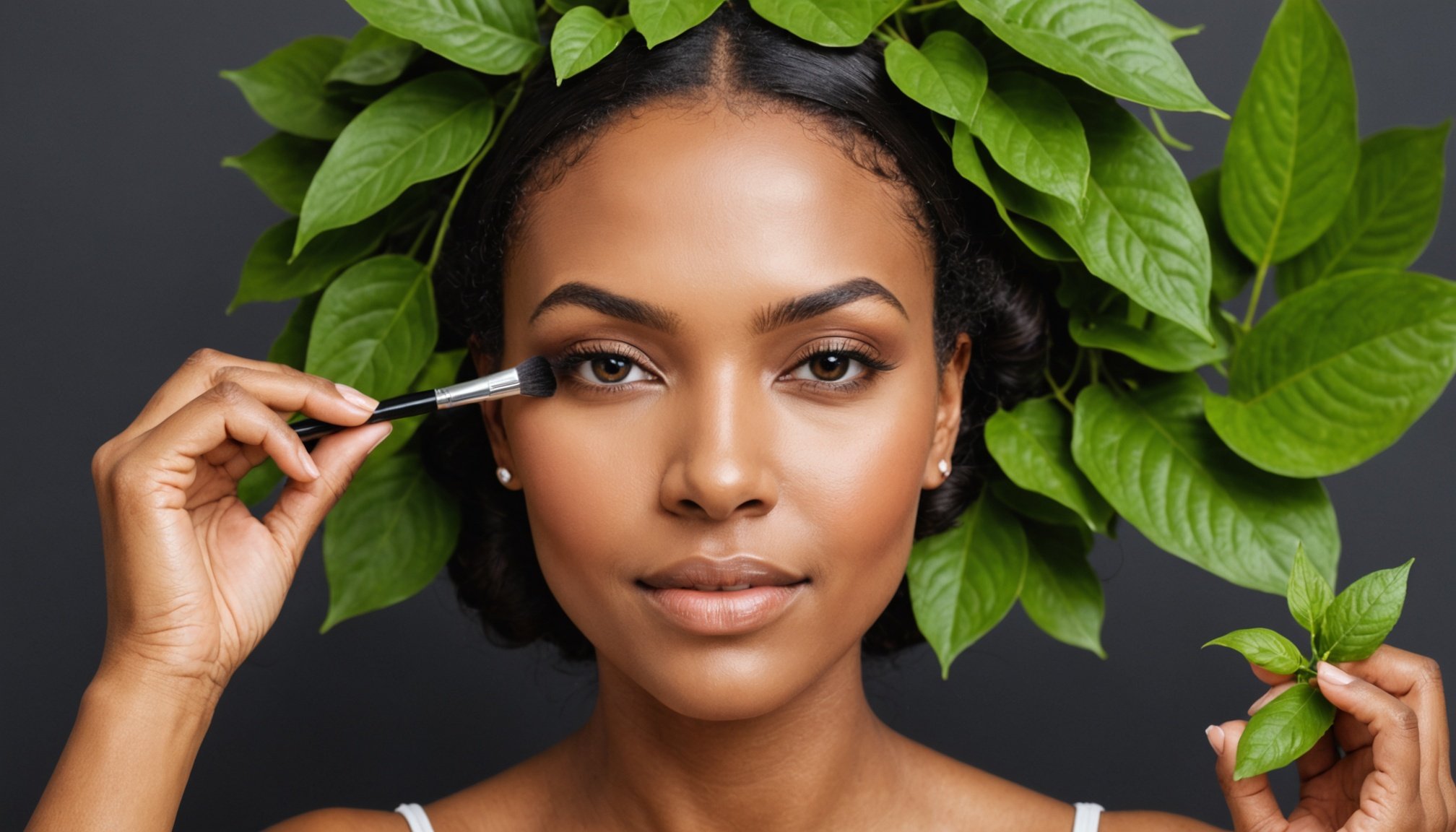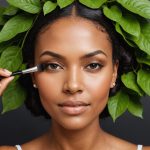Are you ready to elevate your beauty routine while caring for the planet? Embracing sustainable practices not only enhances your glam but also contributes to a healthier environment. Discover how simple choices in products, packaging, and practices can transform your daily ritual. Shift towards eco-friendly solutions, and in the process, protect your skin and our earth. Join the movement for a greener beauty routine; your skin—and the planet—will thank you.
Understanding Sustainable Beauty Practices
In recent years, the concept of sustainable beauty has gained significant traction. At its core, sustainable beauty refers to the adoption of eco-friendly practices within the beauty industry, aiming to reduce environmental impact and promote a healthier planet. This involves using products that are sourced, produced, and packaged in ways that are kind to the Earth.
This might interest you : Revitalize Your Metabolism: The Best Teas for Women Over 50 to Boost Energy and Wellness
Conventional beauty products often have a substantial environmental footprint. From the extraction of raw materials to the disposal of packaging, each step can contribute to pollution and resource depletion. For instance, many traditional beauty products contain synthetic chemicals that can harm aquatic life when washed away. Additionally, the packaging is frequently non-biodegradable, contributing to the growing problem of landfill waste.
Adopting sustainable practices in beauty routines offers numerous benefits. Firstly, it supports biodiversity by encouraging the use of natural, ethically sourced ingredients. Secondly, it reduces waste through minimalistic packaging and recycling initiatives. Lastly, it promotes personal health by minimizing exposure to harmful chemicals. By choosing sustainable beauty products, consumers can enjoy effective beauty solutions while also contributing to a more sustainable future. Embracing this approach not only benefits the environment but also aligns with a growing consumer demand for transparency and responsibility in the beauty industry.
Topic to read : Ultimate Guide: Keeping Your Black Jeans Vibrant and Color-Fresh Through Every Wash!
Eco-Friendly Beauty Products
In the quest for sustainable beauty, choosing eco-friendly products is paramount. But how do we identify them? Firstly, seek out products from sustainable brands that prioritise ethical sourcing and environmentally conscious manufacturing processes. These brands often disclose their supply chain practices and ingredient sources, ensuring transparency.
When selecting eco-friendly beauty products, look for certifications such as USDA Organic, Fair Trade, and Leaping Bunny. These labels indicate that the products meet stringent standards for organic ingredients, ethical trade, and cruelty-free testing. Brands with these certifications are committed to reducing their environmental impact while maintaining product efficacy.
Several sustainable brands stand out for their commitment to eco-friendly practices. Brands like Lush, known for its minimal packaging and natural ingredients, and Burt’s Bees, which focuses on responsibly sourced ingredients and recyclable packaging, are excellent choices. Tata Harper also offers a range of products that are 100% natural and non-toxic, further exemplifying sustainable beauty.
By choosing eco-friendly beauty products, consumers can support brands that align with their values, promoting a healthier planet and a more responsible beauty industry. This conscious choice not only benefits the environment but also encourages more brands to adopt sustainable practices.
DIY Beauty Recipes
Creating your own beauty products can be a rewarding and eco-friendly endeavour. By engaging in DIY beauty, you gain control over the ingredients, ensuring they are natural and free from harmful chemicals. This not only benefits your skin and hair but also supports sustainable practices.
The advantages of making your own beauty products are numerous. Firstly, it allows for customization to suit individual needs, whether it's for sensitive skin or specific hair concerns. Additionally, it often results in cost savings, as many natural ingredients are available at a fraction of the price of commercial products.
Simple DIY recipes can be a great starting point. For skincare, try a honey and oatmeal face mask to soothe and moisturize. For haircare, a coconut oil and avocado mask can provide deep conditioning. These recipes use easily accessible natural ingredients that are gentle yet effective.
When sourcing ingredients, consider purchasing from local farmers' markets or organic stores. This supports local economies and ensures the ingredients are sustainably produced. Opt for bulk buying to reduce packaging waste and choose organic options whenever possible. By embracing DIY beauty, you not only enhance your personal care routine but also contribute positively to the environment.
Reducing Waste in Beauty Routines
Incorporating zero waste beauty practices into your routine is an impactful way to support sustainability. One effective strategy is choosing products with sustainable packaging. Many brands now offer refillable containers or use biodegradable materials to minimize environmental impact. For instance, some companies provide products in glass jars or metal tins, which are easily recyclable and reduce plastic waste.
Recycling and upcycling beauty containers play a crucial role in waste reduction. Ensure that any packaging is disposed of correctly by checking local recycling guidelines. Alternatively, upcycle containers by repurposing them for storage or DIY beauty projects. This not only extends their lifecycle but also fosters creativity and resourcefulness.
Numerous brands are pioneering sustainable packaging solutions. Brands like Lush and Ethique are known for their commitment to zero waste, offering solid beauty bars without plastic packaging. Axiology is another example, using recycled paper for lipstick tubes. These brands exemplify how innovative packaging can align with sustainable practices.
By embracing zero waste beauty, consumers can significantly reduce their environmental footprint. This approach encourages a shift towards more eco-conscious habits, supporting a cleaner planet and a more responsible beauty industry.
The Role of Ingredients in Sustainable Beauty
Understanding the ingredients in beauty products is crucial for making sustainable choices. Many conventional products contain harmful chemicals such as parabens, sulfates, and synthetic fragrances, which can negatively impact both personal health and the environment. Avoiding these ingredients is a significant step towards embracing sustainable beauty practices.
The benefits of using natural ingredients are multifaceted. They are often gentler on the skin and reduce the risk of allergic reactions. Moreover, natural ingredients like aloe vera, chamomile, and shea butter are biodegradable, minimizing environmental harm. Ethical sourcing further enhances sustainability by ensuring that ingredients are harvested responsibly, supporting local communities, and preserving biodiversity.
Reading labels is essential for identifying sustainable products. Look for terms such as "organic," "natural," and "ethically sourced." Certifications like USDA Organic or Fair Trade provide assurance of sustainable practices. Be cautious of greenwashing, where brands may falsely claim eco-friendliness.
By prioritizing natural ingredients and ethical sourcing, consumers can significantly contribute to a more sustainable beauty industry. This approach not only benefits the environment but also aligns with personal health and ethical values, encouraging a more conscientious consumer mindset.
Sustainable Beauty Tools and Accessories
In the realm of sustainable beauty, choosing eco-friendly tools and sustainable accessories is as vital as selecting the right products. These tools not only enhance your beauty routine but also contribute to environmental preservation. Opting for tools made from sustainable materials like bamboo or recycled metals ensures longevity and minimizes waste.
Eco-friendly makeup brushes and applicators are excellent choices for those committed to sustainability. Brands offer brushes with handles crafted from renewable resources and bristles made from synthetic fibres, avoiding animal cruelty. These brushes are designed to last, reducing the need for frequent replacements.
Investing in durable beauty tools is crucial for a sustainable routine. High-quality tools not only perform better but also have a longer lifespan, reducing overall consumption. Consider tools that offer versatility, such as dual-ended brushes, which can serve multiple purposes and further decrease the number of items needed.
When selecting sustainable accessories, look for items packaged in recyclable or minimal packaging. This approach aligns with zero waste principles and supports a cleaner planet. By embracing sustainable beauty tools, consumers can make informed choices that benefit both their personal beauty regimen and the environment.
Building a Sustainable Beauty Routine
Creating a sustainable routine involves thoughtful steps towards eco-friendly beauty habits. Start by assessing your current products. Identify items with harmful chemicals or excessive packaging and replace them with eco-friendly alternatives. Transitioning gradually helps avoid waste while embracing sustainability.
Developing a skincare regimen with sustainable products is key. Opt for items with minimal packaging and natural ingredients. Brands committed to sustainability often use biodegradable materials and ethical sourcing. This not only benefits the environment but also enhances personal health.
Integrating sustainable practices into daily beauty habits can be simple yet impactful. Consider these steps:
- Refill and Reuse: Choose products with refillable options to reduce packaging waste.
- Conscious Consumption: Buy only what you need, focusing on quality over quantity.
- Energy Efficiency: Use energy-efficient tools like LED-lit mirrors or rechargeable devices.
By incorporating these practices, you contribute to a more sustainable beauty industry. Adopting a sustainable routine aligns with a growing demand for responsible consumption and environmental consciousness. Small changes in daily habits can lead to significant environmental benefits, supporting a healthier planet and a more ethical beauty approach.
The Impact of Sustainable Beauty Choices
The beauty industry significantly contributes to environmental challenges, with statistics highlighting its vast environmental impact. For instance, it's estimated that the industry produces over 120 billion units of packaging annually, much of which ends up in landfills. This underscores the urgent need for sustainable choices.
Individual actions can drive collective change. By opting for eco-friendly products, consumers can reduce demand for environmentally harmful practices. Small changes, like choosing products with biodegradable packaging or natural ingredients, can collectively decrease the industry's carbon footprint. Each sustainable choice contributes to a larger movement towards environmental responsibility.
Several brands exemplify positive impact through sustainable practices. Lush, for example, is renowned for its package-free products, significantly reducing plastic waste. Axiology uses recycled materials for its packaging, demonstrating a commitment to minimal environmental impact. These brands illustrate how adopting sustainable practices can lead to meaningful change.
Adopting sustainable choices in beauty not only benefits the environment but also encourages more brands to follow suit. As consumers, making informed decisions supports a shift towards a more sustainable and ethical beauty industry, fostering a healthier planet for future generations.
Community and Advocacy in Sustainable Beauty
The beauty community plays a pivotal role in promoting sustainable beauty practices. By fostering a collective effort, individuals can share knowledge, influence brands, and drive meaningful change. Engaging with like-minded consumers and organisations enables a broader reach and impact in advocating for sustainability.
To actively participate in this movement, consumers can engage with brands through social media, providing feedback and encouraging transparency regarding their sustainability efforts. Sharing sustainable practices, such as zero waste routines or DIY beauty recipes, can inspire others and amplify the message of environmental responsibility. This interaction not only holds brands accountable but also fosters a sense of community among consumers dedicated to a common cause.
Several organisations are at the forefront of advocating for sustainable beauty. Groups like Beauty Heroes and The Sustainable Beauty Coalition work tirelessly to raise awareness and promote eco-friendly practices within the industry. These organisations provide resources, host events, and collaborate with brands to encourage sustainable transformations. By supporting these initiatives, individuals can contribute to a larger movement advocating for a more ethical and environmentally conscious beauty industry. Embracing the power of community and advocacy, consumers can drive significant change, promoting a sustainable future for the beauty industry.
Future Trends in Sustainable Beauty
The future of sustainability in the beauty industry is marked by exciting beauty trends that promise to reshape how we approach personal care. As consumers become more eco-conscious, brands are innovating to meet these demands with emerging trends that prioritise the planet.
One significant trend is the integration of technology to enhance sustainability. Advanced AI and machine learning are being utilised to create personalised beauty products tailored to individual needs, reducing waste from unsold inventory. Additionally, blockchain technology is gaining traction for its ability to ensure transparency in the supply chain, allowing consumers to trace the ethical sourcing of ingredients.
Looking ahead, the future of sustainable beauty will likely see an increase in waterless beauty products. These formulations not only conserve water but also reduce the need for preservatives, offering a more natural product. Furthermore, biotechnology is set to revolutionise ingredient sourcing by developing lab-grown alternatives that minimise environmental impact.
Brands are also expected to focus on circular beauty, where products are designed with the end of their lifecycle in mind. This involves creating packaging that is fully recyclable or compostable, further aligning with zero waste principles. These trends highlight a shift towards a more responsible and environmentally-friendly beauty industry.











